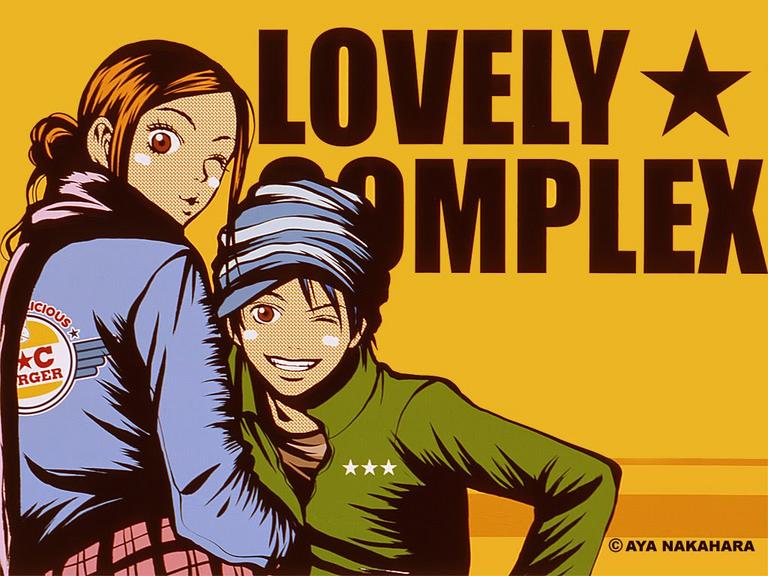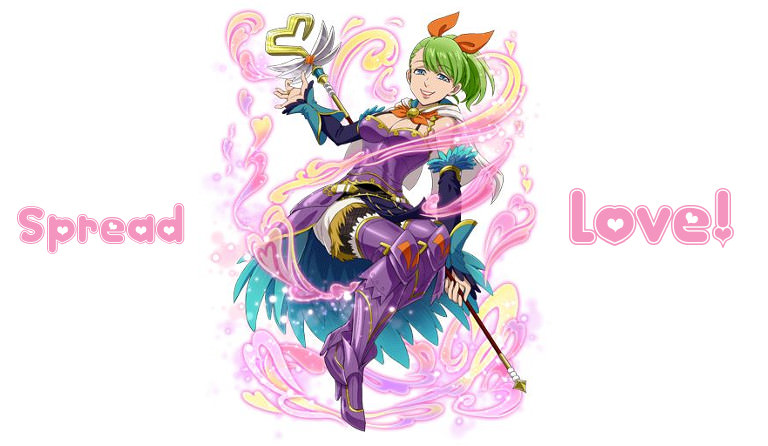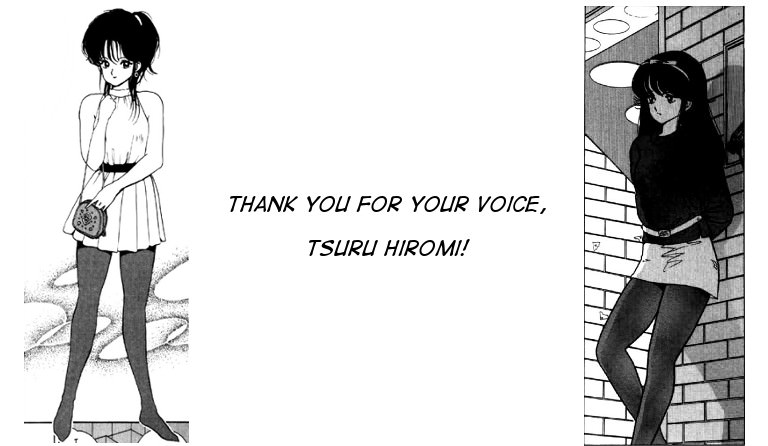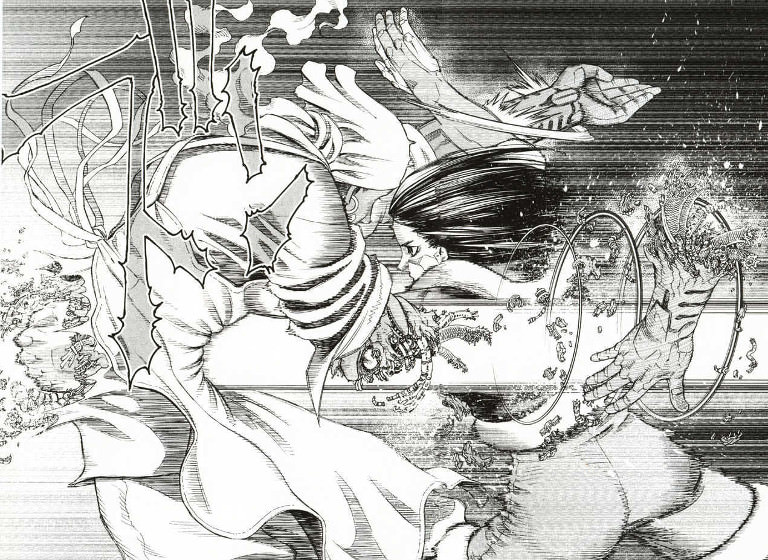Private Entry
Private Entry
October 13th, 2018
More panels
Anime Relations: City Hunter






Posted by Boltz | Oct 13, 2018 3:29 AM | 0 comments
September 29th, 2018
Gundam guide
Anime Relations: Kidou Senshi Gundam
Where does one start watching Gundam? Well, it's a pretty big and old franchise, so it really depends on your personal taste. Read through the list below and pick something that sounds interesting to you. I marked the possible start points in orange. Gundam can roughly be split into:
- the UC (Universal Century) series; these are connected into one huge story, but also have some side stories that are more standalone
- the AE (alternative universe) series; these aren't connected and can be viewed however you like
Main UC story:
Also UC, but mostly side stories, where you also see mentions or appearance of the main characters in some of them. I list them in no particular order:
Other alternative Gundams:
There's a whole bunch of them, like Seed, Wing, 00, G Gundam, After War X, ... but I won't get into them because they're pretty hit or miss and not really essential to watch by any means. I'll just mention the most recent ones:
- the UC (Universal Century) series; these are connected into one huge story, but also have some side stories that are more standalone
- the AE (alternative universe) series; these aren't connected and can be viewed however you like
Main UC story:
- Mobile Suit Gundam (0079) - the original series from the 70's. You can watch the movies instead if you like, they contain all the important bits. If you don't mind the old production and the plot holes, this is a good place to start and get introduced with all the main characters.
- Zeta Gundam - continues from 0079, avoid the movies they have some story elements altered.
- Gundam ZZ (ZetaZeta) - continues from Zeta, can be a bit annoying at the beginning because it moves slightly away from the main story, but a lot of the main characters appear in later episodes, some briefly.
- Char's Counter Attack (CCA) - the final movie, a high budget theatrical production which makes it particularly popular among the fans. The characterization can be weird at times (Quess) as is typical for Tomino, but the ending is very emotional and memorable.
Also UC, but mostly side stories, where you also see mentions or appearance of the main characters in some of them. I list them in no particular order:
- The Origin - this one is actually set before 0079 and tells the story of Char and Sayla in detail. It's a heart felt, high budget production with gorgeous animation, but the second half can get pretty dry with politics. It's probably better appreciated once you've seen the whole main UC story.
- Gundam Unicorn (OVA) - set after CCA, the story follows Mineva Zabi, the young Zeon princess. It fills in a decent amount of info you might have missed from the UC stories and wraps things up nicely. This is a great treat if you've seen the whole main UC story, but it's also a perfectly valid starting point if you want to watch something modern with nice production.
- 0080: War in the pocket - the most serious among Gundam series. It screams "War is bad!" in your face and it has a beautiful production too. If you like the 80's style, this is a good place to start. All you need to know beforehand is there are two big sides in a conflict.
- Gundam F91 - this was supposed to be a full series, but unfortunately got scraped and cut and pasted into a movie. As a result there are some inconsistencies in the story and characterization. But the good thing is F91 was made roughly in the same era as 0080 so it has outstanding music and animation. Another good place to start if you like the 80's style.
- 08th MS team - another series hit with production problems. This time the director died a few episodes in and consequently the series took a different direction. It starts heavy, like 0080, but becomes more streamlined. If you like the 90's style however, this is a good starting point.
- Thunderbolt - a very gritty side story about a relentless clash between Gundam and Zeon forces in one key sector - even more morbid than 0080. Excellent music and animation. If you want something modern and brutal, this is a good place to start.
- Hathaway's Flash - a big budget, action-packed movie. The events in it happen 12 years after Char's Counter Attack. If you start here you probably won't know who any of the characters are, but you'll be blown away by the spectacle.
- MS IGLOO - this is actually 3DCG and one of the early more ugly ones, but it's a fantastic short series. The character expressions and poses actually look quite interesting and funny at times, like they were rotoscoped or something. The story is set slightly before the events of 0079 and follows an experimental team working for a Zeon corporation. It's mostly tragic, like watching failed technological experiments of the 3rd Reich towards the end of WW2. You'll really appreciate IGLOO if you watch it after you've seen most of main UC story.
- 0083: Stardust Memory - most famous for its Top Gun - style opening. It's set between 0079 and Zeta, but it's not really that important to watch it. Unfortunately the team had a fallout mid production, so by the end most of the characters become very unlikable (especially Nina) due to erratic characterization.
- Victory Gundam - by a popular vote the worst Gundam ever. Tomino is said to have been suffering from depression even more than usual while making it, so it's full of weird designs and story elements.
- Turn A Gundam - intended to be the final universe of all the Gundam series, where all the alternative time lines end up. It displays technologies and references from all other Gundams. It's also the last Gundam that was hand drawn on cells, before they moved to digital production. It starts out very interesting, but as it goes on the characterization becomes more weird and inconsistent - as is typical for Tomino.
Other alternative Gundams:
There's a whole bunch of them, like Seed, Wing, 00, G Gundam, After War X, ... but I won't get into them because they're pretty hit or miss and not really essential to watch by any means. I'll just mention the most recent ones:
- Gundam Build Fighters - more or less a funny homage with a lot of references to different Gundam series, geared mostly towards kids.
- Gundam G in Reconquista - really beautiful, with an interesting color palette and designs, but it's sometimes hard to comprehend what Tomino is trying to say. Like most of the series where he has largely free hands you'll either like it or be thrown off by the weird characterization and inconsistent flow of events. Supposedly this is actually considered to be a part of the UC universe, placed after the Turn A Gundam. However, you'll find no proof of that in the series itself.
- Iron blooded orphans - a solid adventure with loots of heated action, but it can be a bit shallow at times, in the eyes of more seasoned viewers.
Posted by Boltz | Sep 29, 2018 9:25 AM | 0 comments
September 26th, 2018
Bakemonogatari watch order
Anime Relations: Bakemonogatari
The Monogatari series can be a bit confusing for a beginner to get into. A lot of things appear on the screen in a fast paced manner - events from the past and future and some of them happen at the same time. It took a long time, but now that Kizumonogatari has been animated we finally have the luxury to follow the original story from beginning to end.
There are at least three possible watch orders:
To get more of an understanding, you can help yourself with these sources:
http://bakemonogatari.wikia.com/wiki/Monogatari_Series_Timeline_and_Watch_Guide
https://www.reddit.com/r/araragi/comments/1mezh0/the_orders_to_monogatari/
https://www.reddit.com/r/araragi/comments/253p64/the_orders_to_monogatari_condensed_version/
https://vignette.wikia.nocookie.net/bakemonogatari1645/images/f/fb/Timeline_Dec_2017-0.png
Watching Monogatari in mostly chronological order
I say "mostly", because 1 or 2 stories are originally told as a backstory and there is one consideration you can make at the start, which I will describe below. Other than that, unless stated otherwise, the events in the list below happen one after the other. To avoid any confusion, let me just say that no matter what some other people might say, it's completely OK to watch the series in the chronological order.
----- Before you start, consider this: ----
You might want to watch Bakemonogatari first and then everything else in the chronological order, like it's listed here. Kizumonogatari is really powerful and brutal, compared to Bakemonogatari's more comedic tone and it has a different visual style compared to most of the other Monogatari series. So, watching Kizumonogatari after Bakemonogatari can serve as a strong finisher to this segment of the story.
On the other hand, watching Kizumonogatari first can make Bakemonogatari even more enjoyable, especially because of the continuity of Hanekawa's story. Another reason to experience Shinobu's full story early on is the fact that after Bakemonogatari, she suddenly becomes very talkative - you might not understand the reason for this and it can be pretty annoying if you don't know what she's talking about.
Just take into account that there are some flashbacks in Bakemonogatari, that hint at the events in Kizumonogatari and Nekomonogatari (black), but for some reason those events aren't accurately portrayed (the places are a bit different).
--------------------------------------------------------
Note: Some novels haven't been animated yet - those will be marked with gray text and you can either read them or wait for the anime to be made.
1. Wazamonogatari (Acerola Bon Apetite)
2. Kizumonogatari (2016-2017) - this is where it all begins. It introduces Shinobu, Hanekawa and Oshino, and saves you A LOT of confusion going further into the series.
Note: the first Kizumonogatari movie is a bit slow and lacks content, but the other two are absolutely fantastic.
3. Nekomonogatari Black (2012) - reveals a lot more of Hanekawa's character and Koyomi's sisters. Clears up more of the confusion that you might encounter going into Bakemonogatari.
4. Bakemonogatari (2009) - the monumental core of the Monogatari series. This was the first arc adapted by Shaft and is famous for it's puzzling backgrounds, animation tricks, playful soundtrack and overall a pretty unique production. The series can be broken down by episodes like this:
1-2 Hitagi crab (Senjougahara)
3-5 Mayoi snail (Hachikuji)
6-8 Suruga monkey (Kanbaru)
9-10 Nadeko snake (Sengoku)
11-15 Tsubasa cat (Hanekawa)
*11 is partially a flashback to Nekomonogatari (black)
**12 is entirely a Senjougahara episode and originally the TV series ending
5. Nisemonogatari (2012) - deals with Araragi's sisters, mostly with Karen, but other characters also appear a lot. Some people say Nisemono is pretty dumb, but I find that claim to be a misunderstanding of what the series really is. It has a short backstory going for it, but mostly it's just some nice fanservice with the characters you've been enjoying up to this point.
----- The above series conclude what is referred to as the "First Season". Below is the 2nd season and I won't specifically mention the 3rd season since some of its events actually happen during the 2nd season. Check out the links at the top of this post for more information on how the seasons are structured in the original novel. ----
6. Monogatari Second Season (2013) - here is where it gets quite complicated!
The title refers to the 2013 anime and the episodes in it. The entries in orange color are from a different series altogether! If you're not very picky you could watch the Second Season (2013) and then Owarimonogatari (2015), but as you can see below the time order is quite a mess. All the events here happen in a time span of 6 months.
Episodes 6, 11 and 16 are recaps, listed as TV specials and you won't even find them on the BD's.
7. Tsukimonogatari (2014) (Yotsugi doll) - a short arc, mostly about Araragi, comes right after the end of the 2nd season.
8. Koyomimonogatari (2016) - short side stories that don't have much to do with the main story, but the last 2 episodes lead into Owarimonogatari (2017) and are a bridge between #7 and #9. Other stories are placed at different times, during the main story, but since they're mostly filler (and by this point you already know the timeline very well), there's not much point in trying to watch them in the correct time order, alongside the main story.
9. Owarimonogatari 2017 (sometimes marked as episodes 14-20, Mayoi H., Hitagi Rendezvous, Ougi Dark) - they go in the written order, starting with Mayoi's chapter.
10. Zoku Owarimonogatari 2018 (Koyomi Reverse) - Araragi is thrown into an alternate world, where everything is reversed, but not everything is as simple as it seems. This arc builds on all the previous events and sort of concludes them.
11. Hanamonogatari (2014) - happens right after Zoku. This arc is focused on Kanbaru Suruga and shows how she deals with her senpai's graduation.
12. Shinobumonogatari
13. Wazamonogatari (Karen Ogre)
14. Orokamonogatari (Suruga Bonehead)
15. Orokamonogatari (Tsukihi Undo)
16. Nademonogatari
17. Musubimonogatari
There are at least three possible watch orders:
- The chronological order - if you're like me and enjoy following long stories in one big chunk, this is the best option for you since it mostly follows one continuous timeline from beginning to end. The only problem is that transitioning between the different series can be a bit rough in the 2nd season, but overall I find it a really enjoyable experience.
- The novel order - this is how the story was written originally in Nisio Isin's novels. It skips back and forth in time between different events, but it builds up a lot of mystery and suspense. If you like to be kept in the dark and piece bits of story together by yourself, this is the order you'll want to stick with.
- The anime release order - Shaft has adapted the series in a different order altogether and in my opinion this can be pretty confusing at times, especially because Kizumonogatari (which holds a very important part of the main story) was animated so late. Watch in this order if you find skipping between different animation styles too jarring.
To get more of an understanding, you can help yourself with these sources:
http://bakemonogatari.wikia.com/wiki/Monogatari_Series_Timeline_and_Watch_Guide
https://www.reddit.com/r/araragi/comments/1mezh0/the_orders_to_monogatari/
https://www.reddit.com/r/araragi/comments/253p64/the_orders_to_monogatari_condensed_version/
https://vignette.wikia.nocookie.net/bakemonogatari1645/images/f/fb/Timeline_Dec_2017-0.png
Watching Monogatari in mostly chronological order
I say "mostly", because 1 or 2 stories are originally told as a backstory and there is one consideration you can make at the start, which I will describe below. Other than that, unless stated otherwise, the events in the list below happen one after the other. To avoid any confusion, let me just say that no matter what some other people might say, it's completely OK to watch the series in the chronological order.
----- Before you start, consider this: ----
You might want to watch Bakemonogatari first and then everything else in the chronological order, like it's listed here. Kizumonogatari is really powerful and brutal, compared to Bakemonogatari's more comedic tone and it has a different visual style compared to most of the other Monogatari series. So, watching Kizumonogatari after Bakemonogatari can serve as a strong finisher to this segment of the story.
On the other hand, watching Kizumonogatari first can make Bakemonogatari even more enjoyable, especially because of the continuity of Hanekawa's story. Another reason to experience Shinobu's full story early on is the fact that after Bakemonogatari, she suddenly becomes very talkative - you might not understand the reason for this and it can be pretty annoying if you don't know what she's talking about.
Just take into account that there are some flashbacks in Bakemonogatari, that hint at the events in Kizumonogatari and Nekomonogatari (black), but for some reason those events aren't accurately portrayed (the places are a bit different).
--------------------------------------------------------
Note: Some novels haven't been animated yet - those will be marked with gray text and you can either read them or wait for the anime to be made.
1. Wazamonogatari (Acerola Bon Apetite)
2. Kizumonogatari (2016-2017) - this is where it all begins. It introduces Shinobu, Hanekawa and Oshino, and saves you A LOT of confusion going further into the series.
Note: the first Kizumonogatari movie is a bit slow and lacks content, but the other two are absolutely fantastic.
3. Nekomonogatari Black (2012) - reveals a lot more of Hanekawa's character and Koyomi's sisters. Clears up more of the confusion that you might encounter going into Bakemonogatari.
4. Bakemonogatari (2009) - the monumental core of the Monogatari series. This was the first arc adapted by Shaft and is famous for it's puzzling backgrounds, animation tricks, playful soundtrack and overall a pretty unique production. The series can be broken down by episodes like this:
1-2 Hitagi crab (Senjougahara)
3-5 Mayoi snail (Hachikuji)
6-8 Suruga monkey (Kanbaru)
9-10 Nadeko snake (Sengoku)
11-15 Tsubasa cat (Hanekawa)
*11 is partially a flashback to Nekomonogatari (black)
**12 is entirely a Senjougahara episode and originally the TV series ending
5. Nisemonogatari (2012) - deals with Araragi's sisters, mostly with Karen, but other characters also appear a lot. Some people say Nisemono is pretty dumb, but I find that claim to be a misunderstanding of what the series really is. It has a short backstory going for it, but mostly it's just some nice fanservice with the characters you've been enjoying up to this point.
----- The above series conclude what is referred to as the "First Season". Below is the 2nd season and I won't specifically mention the 3rd season since some of its events actually happen during the 2nd season. Check out the links at the top of this post for more information on how the seasons are structured in the original novel. ----
6. Monogatari Second Season (2013) - here is where it gets quite complicated!
The title refers to the 2013 anime and the episodes in it. The entries in orange color are from a different series altogether! If you're not very picky you could watch the Second Season (2013) and then Owarimonogatari (2015), but as you can see below the time order is quite a mess. All the events here happen in a time span of 6 months.
- Kabukimonogatari (ep 7-10, Mayoi Jiangshi) - Ougi appears, but she's barely introduced. Ononoki appears again, cool to see her right after end of Nise. Works well as an opening since Shinobu plays a big part, just like in the 1st season.
- Nekomonogatari White (ep. 1-5, Tsubasa Tiger) - happens roughly at the same time as #3 and #4 and is told from Hanekawa's point of view. Watching Hanekawa's arc here makes for a good dynamic, similar to the 1st season. It's a great story and a lot of characters appear in it. Don't get confused by Senjougahara already being familiar with the Araragi sisters, they get introduced off-screen.
- Onimonogatari (ep 17-20, Shinobu Time) - continues right after #1, with Araragi in the lead and happens at the same time as #2.
- Owarimonogatari 2015 (ep. 8-13, Shinobu Mail) - resumes roughly from #3, but is told as a backstory, so don't be surprised at Ougi's appearance. I think it's better to watch this second half first, while the events of the entire arc are still in your head.
- Owarimonogatari 2015 (ep. 1-7, Ougi Formula, Sodachi Riddle, Sodachi Lost) - Ougi finally gets introduced and Sodachi appears. This arc starts very slowly, but builds a strong dramatic story.
- Wazamonogatari (Tsubasa Sleeping)
- Orokamonogatari (Sodachi Fiasco)
- Otorimonogatari (ep. 12-15, Nadeko Medusa) - happens roughly at the same time as #6 and #7
- Koimonogatari (ep. 21-26, Hitagi End) - continues with the story started in #8
Episodes 6, 11 and 16 are recaps, listed as TV specials and you won't even find them on the BD's.
7. Tsukimonogatari (2014) (Yotsugi doll) - a short arc, mostly about Araragi, comes right after the end of the 2nd season.
8. Koyomimonogatari (2016) - short side stories that don't have much to do with the main story, but the last 2 episodes lead into Owarimonogatari (2017) and are a bridge between #7 and #9. Other stories are placed at different times, during the main story, but since they're mostly filler (and by this point you already know the timeline very well), there's not much point in trying to watch them in the correct time order, alongside the main story.
9. Owarimonogatari 2017 (sometimes marked as episodes 14-20, Mayoi H., Hitagi Rendezvous, Ougi Dark) - they go in the written order, starting with Mayoi's chapter.
10. Zoku Owarimonogatari 2018 (Koyomi Reverse) - Araragi is thrown into an alternate world, where everything is reversed, but not everything is as simple as it seems. This arc builds on all the previous events and sort of concludes them.
11. Hanamonogatari (2014) - happens right after Zoku. This arc is focused on Kanbaru Suruga and shows how she deals with her senpai's graduation.
12. Shinobumonogatari
13. Wazamonogatari (Karen Ogre)
14. Orokamonogatari (Suruga Bonehead)
15. Orokamonogatari (Tsukihi Undo)
16. Nademonogatari
17. Musubimonogatari
Posted by Boltz | Sep 26, 2018 9:48 AM | 0 comments
Private Entry